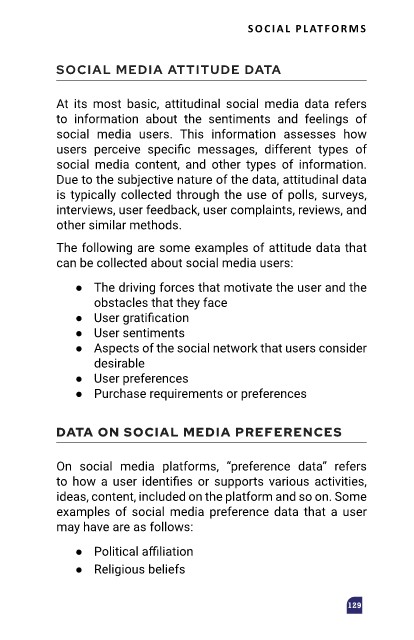Page 149 - Reclaim YOUR DIGITAL GOLD (without audio)
P. 149
Social PlatformS
SOCIAL MEDIA ATTITUDE DATA
At its most basic, attitudinal social media data refers
to information about the sentiments and feelings of
social media users. This information assesses how
users perceive specific messages, different types of
social media content, and other types of information.
Due to the subjective nature of the data, attitudinal data
is typically collected through the use of polls, surveys,
interviews, user feedback, user complaints, reviews, and
other similar methods.
The following are some examples of attitude data that
can be collected about social media users:
● The driving forces that motivate the user and the
obstacles that they face
● User gratification
● User sentiments
● Aspects of the social network that users consider
desirable
● User preferences
● Purchase requirements or preferences
DATA ON SOCIAL MEDIA PREFERENCES
On social media platforms, “preference data” refers
to how a user identifies or supports various activities,
ideas, content, included on the platform and so on. Some
examples of social media preference data that a user
may have are as follows:
● Political affiliation
● Religious beliefs
129

